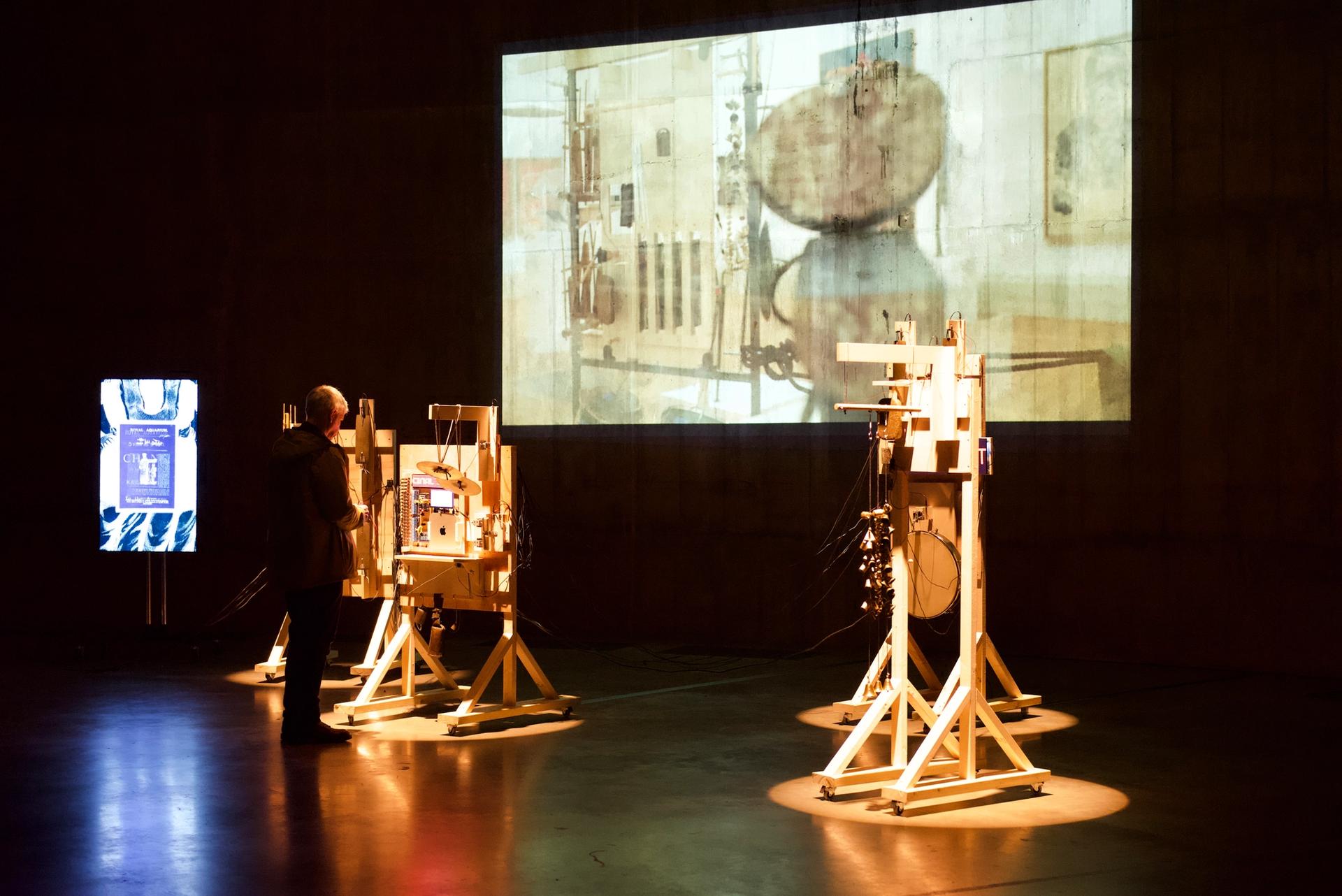In a new display at Tate Modern, four artists have debuted works created as part of efforts to diversify the UK’s national collections. In a 15-month residency programme, British-Nigerian interdisciplinary artist Evan Ifekoya, British Bajan transdisciplinary artist Christina Peake, British-Taiwanese artist and curator Yu-Chen Wang, and British-Singaporean artist and curator Erika Tan focused on expanding the stories told through the country’s institutions.
The initiative is part of Transforming Collections: Reimagining Art, Nation and Heritage, a research project fronted by the University of Arts London’s Decolonising Arts Institute and Creative Computing Institute. Funded by the Arts and Humanities Research Council and conducted over three years, the project seeks to “surface suppressed histories in collections and amplify marginalized voices”, in addition to addressing “structural inequalities and systematic biases in the arts”.
The display, titled Museum X Machine X Me, conveys some of these ideas through four distinct pieces, with a focus on the role new technologies can play in bringing untold stories to the fore.
Tan’s work, Ancestral (r) Evocations, uses sound as a metaphor for the feeling of invisibility, examining items deemed ‘Southeast Asia’ in the Tate and Wellcome collections. The artist used artificial intelligence (AI) to assist in putting together a database of relevant material.
Ifekoya, meanwhile, created Ancestor as Muse in honour of the late Ghanaian-Scottish artist Maud Sulter, renowned for her work highlighting Black women. “My projects exist to shine a new light on the practice of ground breaking artist Maud Sulter, who sadly passed away in 2008, but leaves behind a prolific body of work and impact,” says Ifekoya, who created a website taking visitors on an intimate journey through Sulter's materials in public collections and archives.
“This unearthing, making visible, and focusing on the spiritual dimension of Maud Sulter’s work has been an opportunity to reflect upon the years I’ve spent with her practice, drawing on her as a resource and referencing her texts.”

Tan’s work examins items deemed ‘Southeast Asia’ in the Tate and Wellcome collections
Erika Tan, Ancestral (r)Evocations (2024). Image courtesy of UAL Decolonising Arts Institute
Wang’s piece, How We Are Where We Are, brings to fore visual tropes that were used by museums in nineteenth century Britain, and their effects in the modern era. Finally, Peake’s The Faith, Spirits and Testimonies of Granny Lowe and the Bajan Sea, delves into histories of the Caribbean, while also addressing the issues that prevent some communities from engaging with the UK’s national collections.
Reflecting on her work, which features animated underwater footage captured off the coast of Cornwall, Peak says: “I think one of the things I am most proud of was entwining machine learning outcomes with Caribbean cosmologies to create a new ancestral spiritual language within my practice, which I hope will lead to an intimate, sensual immersive experience for the audience.”
Each artist drew from their research involving several UK museum collections, with a focus on decisions around what is collected, what leads to artists or objects being ‘known’ or ‘forgotten’, and possibilities for interactive machines.
In partnership with Tate, the project culminated with a two-day conference, also titled Museum x Machine x Me, and held on 2 and 3 October. Curated by susan pui san lok, the director of UAL’s Decolonising Arts Institute and Mark Miiler, Tate’s Director of Learning, the event explored the intersection of art, technology and national collections. Insights from the Transforming Collections: Reimagining Art, Nation and Heritage project were presented, with conversations surrounding new challenges faced by museums, and the power of technology to expand collections and share new narratives.
Artworks by Ifekoya, Peake, Wang and Tan created during the residency will be on view at Tate Modern until Sunday 6 October.


